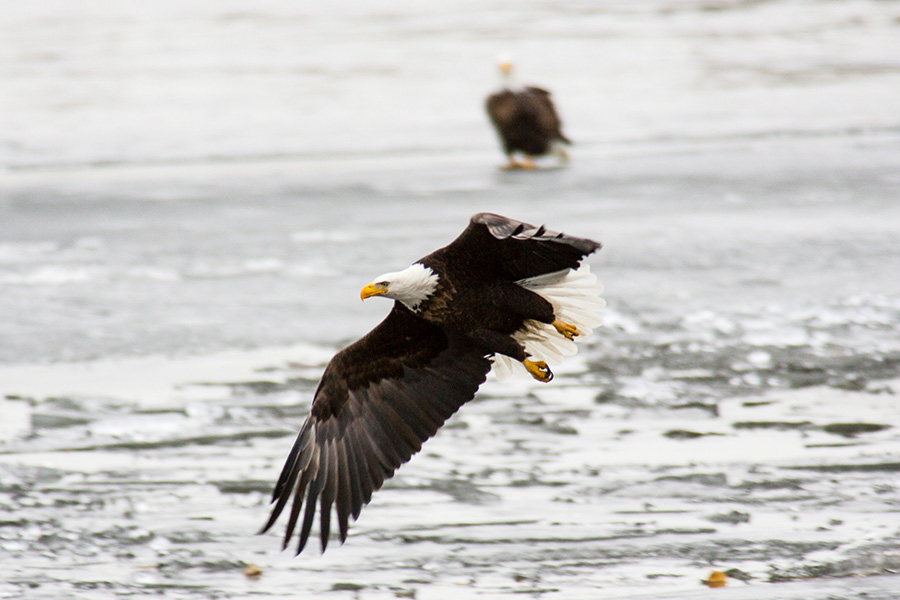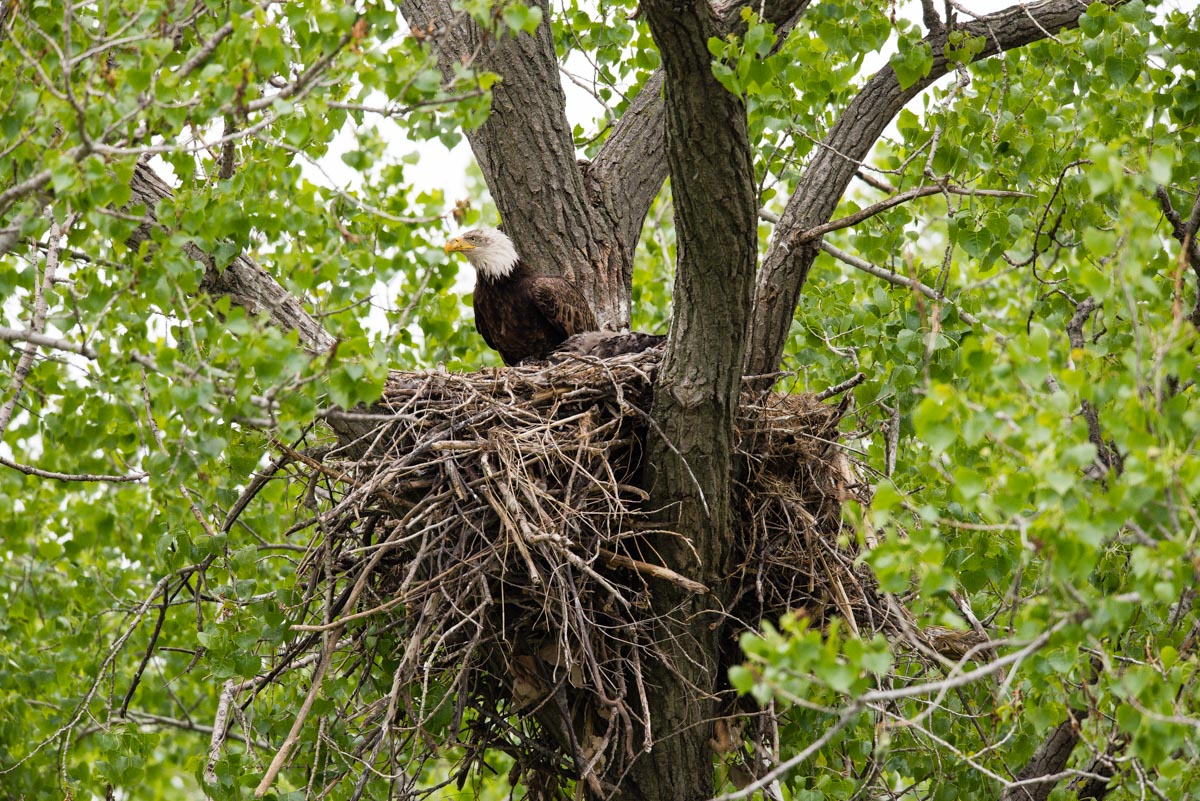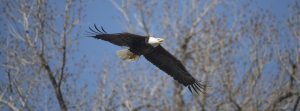The Bald Eagle, our national symbol, represents one of America’s greatest conservation successes. Once endangered due to insecticides (DDT and its relatives) and persecution this majestic bird has rebounded and flourished across the United States. In Nebraska, this species has greatly increased since the first recorded breeding record in 1991, to an estimated 209 active nests in 2017. In 2007 and 2008 the Bald Eagle was removed from the federal and Nebraska list of threatened and endangered species.
During winter, Bald Eagles congregate along major lakes and rivers that have open areas free of ice. The adult Bald Eagle is easily recognizable across the country with its distinctive white head and tail, and dark brown body and wings. Immature Bald Eagles are often mistaken for Golden Eagles with their variable brown and white plumage, however, look for the white “arm pits” of young Bald Eagles.
Viewing opportunities
Bald Eagles can be seen year-round across Nebraska. However, winter and early spring is the best time of year to see many Bald Eagles. If you are interested in seeing large numbers of eagles, an excellent strategy is to visit any large reservoir in February to early March once there is some open water and migrating waterfowl have arrived. Reservoirs that possess some ice are ideal.

Winter
Western Nebraska
- View Bald Eagles up close from the J-2 Power Plant and Kingsley Dam near Lake McConaughy. Peak numbers at the J-2 facility usually occur in December and early January, while at Kingsley Dam the peak typically occurs in February, with as many as 368 birds reported. Learn more about the viewing site.
South-central Nebraska
- Harlan County Dam may attract 150 to 400 Bald Eagles in January.
Eastern Nebraska
- Desoto National Wildlife Refuge, north of Omaha attracts many Bald Eagles that follow the Snow Geese migration in November and March.
- Branched Oak Lake near Lincoln may can attract several dozen Bald Eagles as the ice breaks up in early spring and dead fish are exposed.
Summer
The are several places in Nebraska where active eagle nests might be seen, although viewers should always use spotting scopes and view from an appropriate distance of 100 yards or more.
Eagle Nests in Western Nebraska
- Bayard: A nest is visible from Highway 26, 1/2 mile north of the latte River Bridge, west side.
- Crescent Lake National Wildlife Refuge: A nest on the north side of Crane Lake is visible from the road on the south side of the lake. Be careful driving on the rough roads.
Eagle Nests in Central Nebraska
- Odessa: A nest is visible on the south bank of the Platte River bridge, west side.
- Calamus Reservoir State Recreation Area: A nest is visible from the highway turnout on the north side of the lake, between Gracie Creek and Valleyview Flat.
Eagle Nests in Northern Nebraska
- Niobrara State Park: A nest is visible from the park campground, and county road south of the highway, west side of river.
- Pierce: A nest is visible from the county road 1/2 mile east and 1/2 mile south of Pierce.
Eagle Nests in Eastern Nebraska
- Lake Wanahoo State Recreation Area: The nest is located in the middle of the lake east of the boat ramp


